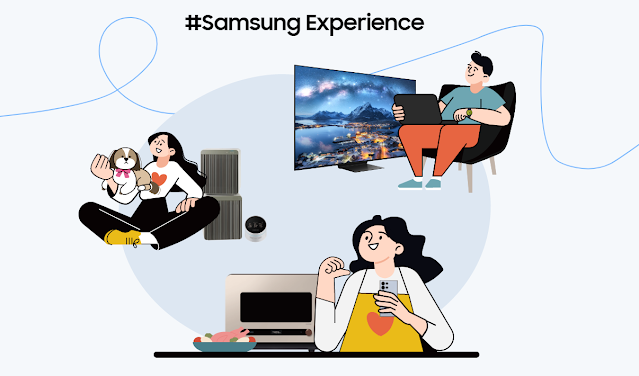Samsung Electronics stands as a global titan in the consumer electronics market, constantly adapting and innovating to maintain its competitive edge. This comprehensive analysis employs Porter's Five Forces framework to understand Samsung's strategic positioning in the industry.
1. Competitive Rivalry: Intense and Ever-Present
The competitive rivalry within the consumer electronics industry is exceptionally high. Samsung faces significant competition from major players like Apple, Sony, LG, and emerging Chinese companies such as Xiaomi and Huawei. This rivalry is fueled by rapid technological advancements, extensive marketing campaigns, and continuous innovation in product offerings.
Samsung's strategy to counter this intense competition includes substantial investments in research and development, leading to innovative products like foldable smartphones and high-resolution displays (Konsyse) (Strategic Analysis Hub). Additionally, Samsung's diverse product portfolio, spanning smartphones, televisions, home appliances, and semiconductors, helps mitigate risks associated with any single market segment.
2. Threat of New Entrants: High Barriers, Moderate Threat
Entering the consumer electronics market requires substantial capital investment, advanced technological expertise, and strong brand recognition. These high entry barriers protect established companies like Samsung from new competitors (Strategic Analysis Hub). However, the rise of tech startups and new entrants from regions with lower production costs, such as China, poses a moderate threat. These new players leverage e-commerce platforms to reach global markets without the need for extensive physical infrastructure (Konsyse).
To maintain its leading position, Samsung continuously enhances its economies of scale and invests heavily in branding and customer loyalty programs.
3. Threat of Substitutes: Moderate but Increasing
The threat of substitutes for Samsung's products varies across different segments. In the smartphone market, consumers can easily switch between brands due to the wide availability of alternatives, such as devices from Apple, Xiaomi, and Huawei (Management Study Guide). Similarly, in the home appliances sector, products from LG and Whirlpool offer viable alternatives.
Samsung mitigates this threat by creating a comprehensive ecosystem of interconnected devices, ensuring that once consumers invest in one Samsung product, they are more likely to purchase additional products within the same ecosystem (SWOT & PESTLE.com). This strategy increases switching costs for consumers, thereby reducing the threat of substitutes.
4. Bargaining Power of Buyers: High and Influential
Buyers in the consumer electronics market have significant bargaining power due to the abundance of choices and the relatively low switching costs. This is particularly evident in the smartphone and home appliance markets, where consumers can easily compare features, prices, and reviews online before making a purchase decision (Strategic Analysis Hub).
Samsung addresses this challenge by focusing on product differentiation and customer loyalty. By offering innovative features, superior quality, and excellent after-sales service, Samsung enhances customer satisfaction and loyalty, thereby reducing the impact of buyer bargaining power (Management Study Guide).
5. Bargaining Power of Suppliers: Moderate and Manageable
Samsung's extensive global supply chain involves numerous suppliers providing raw materials and components for its wide range of products. While there are many suppliers in the market, Samsung's significant purchasing power and the strategic importance of its business to these suppliers typically result in favorable terms (SWOT & PESTLE.com).
Additionally, Samsung’s investment in backward integration, where it manufactures some of its own components, further diminishes supplier power. This strategy ensures a steady supply of high-quality components and reduces dependency on external suppliers.
Conclusion
Samsung's ability to navigate the competitive landscape through strategic investments, innovation, and a robust product ecosystem underscores its resilience and adaptability. By leveraging its strengths and addressing the challenges posed by Porter's Five Forces, Samsung continues to solidify its position as a leader in the consumer electronics industry.
Recommended Reading:
By understanding these forces, stakeholders can better appreciate Samsung's strategic decisions and their implications in the rapidly evolving consumer electronics market.

